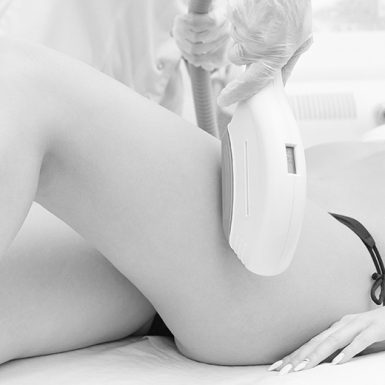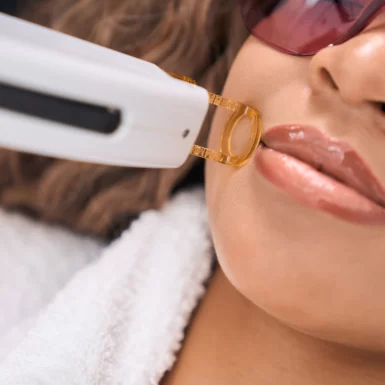There is no denying that birthing a child is one of life’s greatest joys. From decorating the nursery to holding your baby for the first time, it feels like a dream come true. But when that shine wears off, and the pregnancy glow is no more, most women are left with a different body in the mirror.
Many new moms find their post-pregnancy bodies a source of insecurity and frustration. Their tummy might feel loose, and their skin might not snap back like it used to. Thankfully, there are ways to embrace and love your post-pregnancy body. You don’t need to rush into surgery to feel good about yourself again. Many options exist that don’t require cutting into your skin.
Why Skin Sags After Pregnancy
The reason for sagging skin after pregnancy is straightforward. As the body gains volume, the skin expands. Think of it like a balloon that gets bigger as you blow more air into it. You must remember that collagen and elastin play a critical role in keeping skin elastic.
As the body gains weight during pregnancy, these proteins allow your skin to stretch beyond what’s considered normal. When the skin stretches too much, it loses its ability to snap back into place.
These proteins are constantly replenished. And your skin will start to regain its firmness and elasticity. However, this process can take time, and some women may experience sagging skin for more extended periods than others.
Note: It is virtually impossible to completely prevent stretch marks during pregnancy. Instead of obsessing over it, it’s best to focus on ways to fix it.
Top Non-Surgical Procedures for Skin Tightening
Next, let’s look at how to tighten skin after pregnancy without surgery. You could do nothing and wait months or years until your skin naturally tightens. Or you could look into non-surgical procedures that can help speed up the process.
These postpartum skin tightening procedures are generally safe and have little to no downtime. This has made them a popular choice for new moms looking to regain their pre-pregnancy bodies.
Radiofrequency Skin Tightening
Radiofrequency uses heated energy to target the lower layers of your skin. The procedure takes about 30-60 minutes per session. There is no downtime needed, which means you can return to your daily activities right away. Some people feel mild redness or warmth after treatment, but these side effects fade quickly. Results appear gradually over a few weeks. This heat-based treatment also stimulates collagen production.
Microneedling Therapy
Microneedling therapy uses tiny needles to create small injuries in the skin. It sounds scary, but these micro-injuries actually help your skin heal stronger. The procedure takes about 30 minutes. You might need up to 2 days of downtime since your skin will be red and sensitive. Side effects include temporary redness, swelling, and slight bruising. Some people see results after one session, but most need 3-6 treatments for optimal results.
Laser Skin Resurfacing
Laser skin resurfacing removes the outer layer of skin and heats the underlying layers. This triggers new cell growth and collagen production. The procedure takes 30 minutes to an hour, depending on the treatment area. Downtime ranges from 3-10 days, during which your skin will be red and might peel. Side effects include redness, swelling, and sensitivity to sunlight. Results can be seen after the healing process is complete.
Ultrasound Therapy
Ultrasound therapy is a newer form of treatment that sends focused sound energy deep into the skin layers. This creates heat that stimulates collagen production. All without affecting the surface of the skin. The procedure takes about 60-90 minutes. There is minimal to no downtime. Side effects are mild and may include slight redness and tingling. Results develop over 2-3 months as new collagen forms. Some people see continued improvement for up to 6 months.
How Each Procedure Works
The above methods work for a variety of skin issues, but how exactly do they help with post-pregnancy sagging?
Radiofrequency Mechanism
Radiofrequency for postpartum skin targets the loose skin often found on the belly after pregnancy. At SpaMedica, we use Morpheus8. It combines the best of both worlds: radiofrequency and microneedling. This procedure also kickstarts new collagen production. For new moms, this means the treatment specifically works on areas stretched during pregnancy.
Microneedling Process
Microneedling after pregnancy creates thousands of tiny channels in areas affected by pregnancy stretching. This triggers your body’s wound-healing response in these exact spots. As your skin heals, it produces fresh collagen and elastin in the areas that need it most.
Laser Treatment Technology
Laser treatments work on post-pregnancy skin by targeting both the surface and deeper layers. The laser energy removes damaged skin cells that contribute to the tired, stretched appearance. At the same time, it heats the deeper layers where pregnancy has weakened the collagen network.
Ultrasound Therapy Explained
Sound waves can target specific depths where tissue has been stretched. The controlled damage created by the sound waves triggers a healing response exactly where needed.
Benefits of Non-Surgical Methods
The one thing all these procedures have in common is that they are non-surgical methods. They don’t require cutting into your skin. Another way to get dramatic results fast is through surgery. In these cases, your doctor will cut you open to physically shape and contour your body.
That being said, many people nowadays prefer non-surgical skin tightening treatments after pregnancy.
Minimal Downtime
Surgical procedures like tummy tucks require weeks of recovery. You might be in bed for days and unable to lift your baby for weeks. Non-surgical treatments have much shorter downtimes. Most let you return to normal activities the same day or within a few days.
As a new mom, you don’t want to be sidelined for long. Non-surgical skin tightening allows you to care for your baby without interruptions.
Safety for New Moms
With a newborn depending on you, your safety is priority number one. No medical procedure is risk-free, but surgical risks are higher. Non-surgical options are minimally invasive with less risk. They’re a better option to get home to your baby quickly and don’t require medications that might affect breastfeeding.
Gradual Collagen Boost
There’s an added benefit of a gradual collagen boost with non-surgical options. Unlike surgery, which just removes excess skin, these treatments improve skin quality over time. Benefits include improved skin texture, elasticity, and firmness. Your skin doesn’t just get tighter – it gets healthier. These effects can improve for months after treatment.
At-Home vs. Professional Treatments
Beyond non-surgical and surgical procedures, many new moms swear by a DIY approach. These at-home remedies often rely on popular tips handed down through generations or shared online. Some are legitimate, while others bring little to no help without much scientific evidence to support their claims.
DIY Skin Tightening Tips
Although we believe non-surgical treatment is the most effective way to deal with sagging skin, we’d be remiss not to name a few DIY tips. Use these at your own discretion, but don’t expect overnight results:
- Strength training: Core workouts can tone muscles under sagging skin.
- Eat healthy: Foods rich in healthy fats and proteins support skin health.
- Lose weight gradually: Rapid weight loss can make sagging worse.
- Collagen supplements: May help support skin elasticity.
- Improve sleep: Your skin repairs itself during sleep.
- Stay hydrated: Drinking enough water keeps skin plump.
- Skin wraps: Temporary tightening, though effects don’t last long.
When to Visit a Clinic
Feel free to try these at-home treatments or to combine them with clinical work. After all, these are all great suggestions for self-care, even after the sagging skin issue is resolved. They are habits you should adopt life-long.
If you want more drastic results, though, it’s worth visiting a clinic just to get a professional opinion, if nothing else. There is no pressure to sign up for anything right away, but knowing your options never hurt anyone.
Some situations where it may be more urgent to visit a clinic include when the sagging skin is:
- Severe and affecting daily life
- Accompanied by other health issues
- Negatively affecting mental health
- Causing chronic pain or discomfort
What to Expect During Recovery
One of the main reasons people hesitate to get treatment is a fear of uncertainty. It helps to know what you’re getting into and what to expect. Contrary to surgical procedures, non-surgical treatments should be a breeze. Most women can return to their normal activities right away or within a day.
Common side effects include redness, swelling, and mild discomfort that subsides within days.
Session Frequency
Another thing you might wonder is how treatment will affect your schedule. Since these often have cumulative effects, more than one session is usually necessary. The exact number of sessions will depend on what kind of treatment you’re getting and its intensity. It typically ranges from 3-6 sessions spaced about 4-6 weeks apart.
Immediate vs. Long-Term Results
Even though we recommend more than one session, you will definitely see immediate results after your first one. Most women notice some tightening right away. Some treatments, like microneedling, will take a few weeks to show results as collagen production increases.
Side Effects and Safety
Next, let’s talk about safety. As previously mentioned, a risk-free medical procedure does not exist. No matter how small, there is always the chance of something going wrong. Thankfully, these are usually minimal or inconsequential.
Common Risks
Since these procedures share the basic concept of how they interact with the skin, some risks are inherent to all of them. These include temporary redness, swelling, and sensitivity in the treated areas. Some women may experience brief discomfort during the procedure.
More serious but rare side effects can include burns, changes in skin colour, or scarring if the treatment is not performed correctly. This is why choosing a qualified provider is so important.
Contraindications for Postpartum Women
Not all new moms are good candidates for these procedures. If you’re still breastfeeding, some treatments may need to be postponed. Women with certain skin conditions, active infections, or who are taking specific medications may need to wait. Always tell your provider about your full medical history and whether you’re nursing your baby.
Cost Comparison
In the medical world, you get what you pay for. The aforementioned safety concerns are greatly reduced when dealing with licensed professionals. With that comes a higher cost, but the trade-off is greater assurance of quality and safety. Here’s what you can expect to pay to tighten loose belly skin after having a baby.
Radiofrequency Costs
Radiofrequency treatments start at $2,500 per treatment. The final price depends on the size of the area being treated, the number of sessions needed, and the specific technology used. Most women need 3-6 sessions for optimal results, so factor that into your budgeting.
Laser Treatment Pricing
Laser treatments start at $799 per zone. The effect depends on the size of the zone and number of sessions needed. Treating the entire abdomen might cost more than focusing on just the lower belly.
Choosing the Right Procedure
As somebody without medical experience, it can be difficult to choose between these cutting-edge technologies. The best way to make the right choice is with the expert guidance of a medical professional.
SpaMedica is an industry titan with over 22 years of experience helping women regain confidence in their bodies. We invite you to sit down with Dr. Amber Chen and Dr. Paul Cohen to discuss your goals, comfort level, and budget. They can create a personalized treatment plan that works for you and your lifestyle as a new mom.






